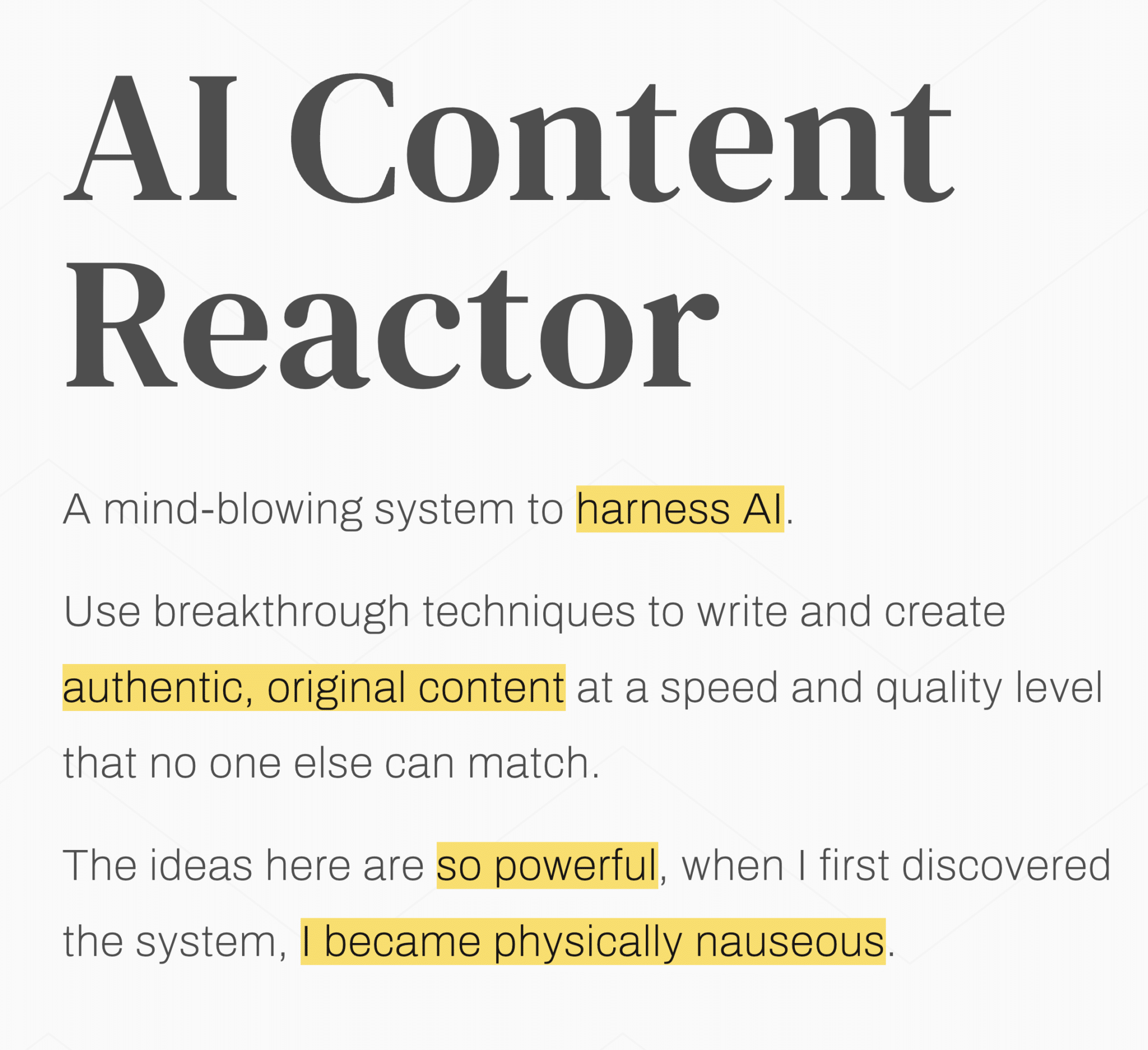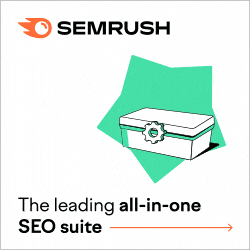Originally published November 2018 | Modified March 2025
Small and medium-sized enterprises (SMEs) face unique challenges compared to large corporations. With limited budgets, smaller teams, and tighter resources, you need to adopt online marketing strategies for SMEs that are both cost-effective and quickly impactful.
Creating an online marketing strategy that meets your needs means taking into account your target audience, budget, tools, and channels. On a daily basis, the marketing managers of these smaller enterprises are challenged with how to achieve the greatest impact, with the best results, for the smallest budget possible.
In other words, marketing for small enterprises takes a lot of creativity, ingenuity, and bull-dogged stick-to-it-iveness (go ahead, say it’s not a word).
This article is here to help you improve your online marketing strategies, whether you’re a local business owner, have a niche e-commerce shop or trade house, or you’re a professional service provider.
Table of contents
- Know your playing field.
- Practice hyper-segmentation.
- Build a strong, authentic brand identity.
- Become an expert in your niche.
- Use local SEO to top visibility.
- Pay attention to this marketing trio.
- Focus on quality engagement over quantified posting.
- Nurture your customer relationships with email marketing.
- Plan your Google Ads to correspond with organic offers.
- Use this quick-start checklist for your SME marketing plan.
- Final thoughts
Know your playing field.
With marketing, the type of business you have matters more than what you sell, although that has significant weight as well. The type of business you run (its structure, target audience, brand positioning, and operating model) often shapes your marketing approach as much as the specific products or services you offer.
For example, a local service business may focus on community engagement and local SEO. A global e-commerce brand, however, has no reason to invest in local, but all the reason to look at broad digital advertising and content marketing.
Even how you invest can change your strategies. As an another example, large companies can invest in broad, long-term brand campaigns. SMEs, on the other hand, thrive by being agile and hyper-focused. Unlike brands like Nike, Walmart, or Amazon that can spread risk across multiple channels, SMEs need to:
- Maximize every dollar: Prioritize tactics that deliver immediate ROI.
- Focus on a niche: Narrow your target audience to avoid wasting resources.
- Build local appeal: Use your community connections as a competitive edge.
Understanding these differences is the key to adopting a marketing strategy that works for your business. Here’s what you’re looking for:
Practice hyper-segmentation.
The first step of any online marketing strategy will always be to identify your target audience, no matter the business. This is Marketing 101. Knowing their needs will make it easier for you to satisfy them properly.
- who are they
- what do they want
- why would they look for your offers
- how would they look for your offers
- where would they look for your offers
However, online marketing for SMEs requires a little extra finesse. Instead of targeting an overly broad market, narrow down on your audience. For example, rather than addressing “all pet owners,” you might focus on cat owners in the suburbs who value organic products.
Of course, this is only one campaign. Each campaign is hyper-segmented so they go to specific people in your target audience (i.e. the ones most likely to purchase the particular product you’re offering in that campaign).
Action steps:
- Create a detailed buyer persona that includes demographics, local interests, and purchasing habits.
- Use surveys or feedback from existing customers to refine your persona.
- Tailor your messaging and marketing channels to reach this specific group.
This approach helps create a more personal connection with your audience. It also reduces budget waste because you’re only spending on the segments you know are interested. When managed correctly, hyper-segmentation takes the guess work out of marketing campaigns.
Build a strong, authentic brand identity.
The success of any company has a direct relationship with the power and ability to offer a simple, different and unforgettable experience. Establishing a defined identity is a decisive factor to ensure the prosperity of your business.
Your brand is more than a logo. It’s the story you tell. For small and medium enterprises, authenticity can be an immediate and significant differentiator.
- Craft a compelling narrative: Explain why your business exists, what it stands for, and how it uniquely benefits your customers.
- Keep it consistent: Use the same tone, colors, and messaging across your website, social media, and in-person interactions.
Action Step:
Write a one-paragraph mission statement that reflects your core values and unique selling proposition. Display this on your website and include snippets in your marketing materials.
Remember, small businesses can win customers by focusing on genuine customer service and community engagement. These traits are often harder for large enterprises to replicate.
Become an expert in your niche.
One aspect that is directly related to the size of an SME is its ability to have a large portfolio of products and services. The bigger the business, generally the bigger the portfolio. But to be the best you don’t have to offer everything.
Specialization differentiates you from the competitors. It also makes your marketing efforts more targeted and effective. While you may offer a lower range of products, you might also be able to offer greater benefits, more personalization, and specific features your users want.
In other words, rather than trying to be everything to everyone, hone in on what you do best. If you run a small bakery, for instance, focus on being known as the “best custom cupcake shop in town.”
Action Step:
List your core offerings and choose one or two areas where you can excel. Highlight these specialties in your online content, social media profiles, and local advertising.
Use local SEO to top visibility.
Not every company is going to need local SEO. As we mentioned above, an ecommerce owner isn’t going to have people coming to a physical store. But for those who do have physical business, local SEO should be a no brainer.
However, local customers are increasingly turning to online searches to find nearby services. Optimizing for local SEO is essential for SMEs that depend on foot traffic or local clientele. Here’s first steps:
- Claim your Google Business Profile: Make sure your business appears on Google Maps and local directories.
- Optimize your website: Include your city or neighborhood in title tags, meta descriptions, and headings.
- Encourage reviews: Ask satisfied customers to leave positive reviews on Google and Yelp.
- Update your business information: Make sure your NAP (Name, Address, Phone number) is consistent no any online listing.
- Create localized content: For example, create blog posts or customer testimonials that mention your city.
- Monitor and respond to reviews: Respond to the positive and negative reviews, and always be professional. Transparency like this helps build trust and engagement.
Implementing these tactics can boost your local search rankings and bring more targeted traffic to your website.
Pay attention to this marketing trio.
In a business context, your site, SEO, and content are a marketing powerhouse:
- Search Engine Optimization: SEO helps with the first point of contact, the search engines. When you are in the search results for a key phrase, what your search snippet says makes the difference on whether you get your first conversion. You want to use highly targeted terms like “design tips for a more sustainable office at home” or “designing sustainable home-based offices.” For local businesses, include phrases like “best [service] in [city].” (Keyword strategies can be complex, which is a topic for a whole other blog.)
- Your website: When someone converts from search to your site, they build a second impression. What do they see? Most people see the visual aspect first. They see whether it fits their screen and whether it loads quickly. Then, they see your content.
- Content: Content marketing is one of the top strategies for small and medium enterprises, as well as large enterprises and pop-up shops. When you realize that “content” is anything from images to videos to articles like this one and more, perhaps you understand why it’s so important. The more targeted your content, the higher your conversion rates.
Do large enterprises look at this marketing trio? Sure, but not in the same way.
We’ve had large enterprises pay for marketing and SEO campaign strategies and never implement them. We’ve developed written content and optimized pages that they never put up. -And not just for a month, but months, plural.
As someone with a small or medium enterprise, can you see yourself doing the same? Our pricing is competitive, but it’s not that competitive.
What you can do with a site, SEO, and content marketing for a medium-sized enterprise would astound you. Especially if you know your market well and are hyper-segmenting. These are excellent means to share your brand and what you offer with your users, interact with the public, and reach new customers.
Action Steps:
Develop a content calendar that includes regular blog posts, how-to guides, and case studies that highlight your expertise. For example, a local landscaping company might publish seasonal garden tips that resonate with nearby homeowners.
Focus on quality engagement over quantified posting.
“All you have to do is put in 20 posts a day and you’ll watch your social platforms grow in leaps and bounds!” says Influence Marketer 25. Hashtag business goals.
But social media isn’t about having a presence on every platform. In fact, for SMEs, that’s highly unrealistic. Instead, focus on engaging deeply with the right audience on the right platform.
Right now, there are approximately 15 – 20 major social media platforms. If you include every niche, region, and emerging platform, there are hundreds. Additionally, there are messaging apps like WhatsApp and WeChat that play a huge role is social interactions.
Large enterprises may be able to have an army of social media gurus out there. They can afford to spam the platform with anything and everything, and just throw those social noodles at the wall.
You have to be smarter than that with your social media budget, tools, and resources. Choose your channels wisely. Take the time to learn where your audience is most active.
For example, one of our residential service clients has a respectable following on Nextdoor. This is a place we want to nurture, because:
- The client is a local business
- Nextdoor specifically brings neighborhoods together
- We have direct access to their target market
The same can’t be said for LinkedIn, which is going to be less effective for this type of client.
Action Step:
Plan to post consistently on one or two chosen platforms using scheduling tools like Hootsuite or Post Planner. Monitor your engagement and adjust your content strategy based on what resonates most with your audience.
Nurture your customer relationships with email marketing.
Attracting and retaining customers is essential for a business to grow. Email marketing is a powerful tool do do just that, and it works with even a modest subscriber list.
The success of an email marketing campaign, without a doubt, is personalization. For this, you already have the basics: a list of your contacts that you’ve been building through segmentation, personalized attention, social networks, and content marketing. Through email, you can inform your audience about news, offers, discounts, incentives, and others.
The key is to start small. Collect emails from website visitors, in-store sign-ups, or events. Personalize with customer names and tailored content. Provide value by sharing tips, special offers, or exclusive news. Ultimately, you want them to find enough value that they’re glad for the email, not irritated by more spam.
Action Step:
Set up an email campaign using a service like Mailchimp. Create a simple workflow that welcomes new subscribers, offers them a discount or useful content, and follows up with a monthly newsletter.
Plan your Google Ads to correspond with organic offers.
It takes savvy planning, but Pay Per Click (PPC) can be effective when done right, even for SMEs with limited funds. Hyper-segmenting plays a significant role here, especially for geo-targeting.
Geo-targeting is where you put ads out to specific locations. Even if you aren’t a local-focused company, geo-targeting can be more effective for SMEs. To understand this concept, all you need is to do a location search for something like “shrimp and grits.” You’re much more likely to see this kind of dish advertised in the South East coastal regions rather than the North West around Washington.
You also want to bid on long-tail keywords. Instead of broad terms, choose more specific keywords that describe your unique offerings (e.g., “artisan bakery in [city]”). Long-tail keywords typically have less competition, so they aren’t as expensive. They also are more hyper-focused on smaller, highly interested audiences.
Finally, make sure you set a daily cap. Keep your spending under control by setting modest daily budgets and tracking your results closely.
Action Step:
Run a small, geo-targeted campaign for a limited time to test your messaging and adjust based on performance. Consider alternative platforms like Facebook Ads, which also offer precise location targeting at low cost.
Be brief and concise when detailing your products, promotions, offers, and discounts. Use at least one of the selected keywords and always use a call to action that motivates the user to visit your website such as “click on the link” or “get a discount.”
Use this quick-start checklist for your SME marketing plan.
No marketing plan is complete without a call-to-action, or CTA. And, it’s not just saying you want them to click here, buy now, call now, download today, etc. Connecting the dots is vital. From beginning to end, the marketing campaign should all lead to the next CTA. Here’s what that looks like.
Decide what you want to accomplish.
Everything feeds into the type of campaign you plan, how you publish it, and how you track it. Setting clear goals is a necessary first step so you can track the success of your campaign. For example, are you trying to increase sales, grow your customer engagement, or increase brand awareness?
Especially if you have a small budget, you want to line out how long your campaign will be. This also helps decide what you put into your campaign. If you have a shorter timeline, for example, you might choose ads. If you have a longer runway, video marketing may be a good choice.
Define a hyper-specific audience.
You know what product or service you’re selling with this campaign. Where are your most likely potential customers? For example, if you sell surf boards, how likely are you to get sales in Montana? Don’t guess this; it’s important to use data, because you’re getting into the difference between a successful, money-making campaign or a marketing flop.
Focus on what you do best.
What makes you the shining star of surf board makers? Why were you claimed “a great siding company?” If you don’t know, go back to your customers. What are they saying about you?
- They were on-time, quick to get the job done, and left without making a mess.
- XYZ does a great job with customer service. I had a problem with ABC product and they not only replaced it, but they gave me a discount on my next purchase!
Once you know what makes your product or service stand out, you’re half way there to selling it.
Tell your brand story.
Craft a compelling, authentic mission statement. Talk about your team and why you’re doing what you do. Share your professional backgrounds. Answer the question: Why should we listen to you?
When you share this information, you’re adding authority. You’re giving search and potential customers more information about you and your company. In return, they give you trust.
Smooth your rough edges.
Review your digital properties: your website, content, SEO, social, email, and paid ads. Do they all carry the same branding? Can you tell that they’re run by the same company? What about phone numbers and website addresses on the profiles. Are they uniform?
Wherever you have a profile, you should be able to tell it’s yours. That is, the same branding, colors, and fonts, as well as address and business name.
Final thoughts
By following these strategies, you can take better control of your online marketing. Your small size is an advantage; one that allows you to build deeper customer relationships and make every marketing dollar count. Creating unified, targeted marketing campaigns can drive brand visibility, boost conversions, and build a loyal customer base.
Partner with an experienced team.
Level343 can help. With over 20 years of experience in online marketing, we have the acumen to analyze your business, design customized campaigns, and execute strategies that deliver measurable results. Contact us today to discuss your needs.



































